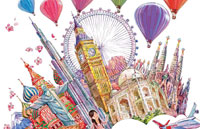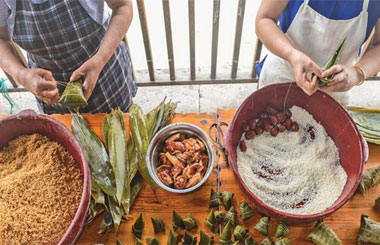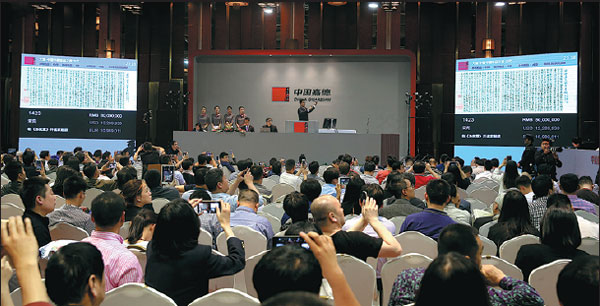Classical art market growing
Updated: 2016-06-09 07:43
By Lin Qi(China Daily)
|
|||||||||
The Grand View sale of old Chinese artworks made 667 million yuan, exceeding the modern art total for the first time since the sale's launch. Lin Qi reports.
|
The Grand View sale of Chinese painting and calligraphy on May 15 generates several high prices, including 92 million yuan for Ming Dynasty calligrapher Song Ke's album. Provided To China Daily |
On May 15, the Grand View night sale of Chinese paintings and calligraphy, staged twice a year by Beijing-based China Guardian Auctions, saw a packed salesroom. So those who arrived late had to stand in the back. When the first part of the sales event - comprising modern works - ended, many walked out of the room, leaving dozens of empty seats.
But that meant the most exciting part of the auction was just about to get started.
The second section, comprising classical works, typically referring to pieces produced during and before the Qing Dynasty (1644-1911), generated three big transactions that night.
Jushi Tie, a letter by Song Dynasty (960-1279) politician Zeng Gong, grossed 207 million yuan ($31 million); a calligraphy album in caoshu (a running script) by Ming Dynasty (1368-1644) calligrapher Song Ke sold for 92 million yuan and an album of calligraphed Buddhist sutras, poems and paintings by Tang Dynasty (AD 618-907) and later scholars fetched 57.5 million yuan.
In the classical art section - where 15 of the total of 45 pieces remained unsold - the total takings were 667 million yuan, exceeding the modern art takings for the first time since the Grand View sale was launched in 2011.
The results of the Grand View sale reinforce the impression that the market for classical Chinese art, which has been stable over the past decade, is growing.
The classical Chinese art market is becoming bigger slowly even as other categories, including contemporary art and modern Chinese paintings and ceramics that used to produce record prices in the boom years around 2008, have continued to slide.
This is because of sluggishness in the Chinese art market since 2014 as the country's economy cools, driving away buyers looking for quick profits.
Related Stories
Puppet masters donate items to revive dying art form 2016-06-08 16:52
Love and tragedy highlight London art auction 2016-06-08 08:47
Art beat 2016-06-08 08:01
Art from Reagans' home to be auctioned 2016-06-07 07:10
Inheritor of Shadow puppet art Zhang Kui 2016-06-06 16:25
Career in an art that is less than skin deep 2016-06-04 10:44
Today's Top News
China lists first sovereign offshore RMB bond on LSE
British PM denounces Brexit's 'complete untruths'
47% of European businesses would expand in China
Xi urges Washington to boost trust
Council of Europe unveils security convention
Former PM warns of chaos in case of Brexit
Basic income plan rejected by Swiss voters
Eyeing the goal in European football
Hot Topics
Lunar probe , China growth forecasts, Emission rules get tougher, China seen through 'colored lens', International board,
Editor's Picks

|

|

|

|

|

|








